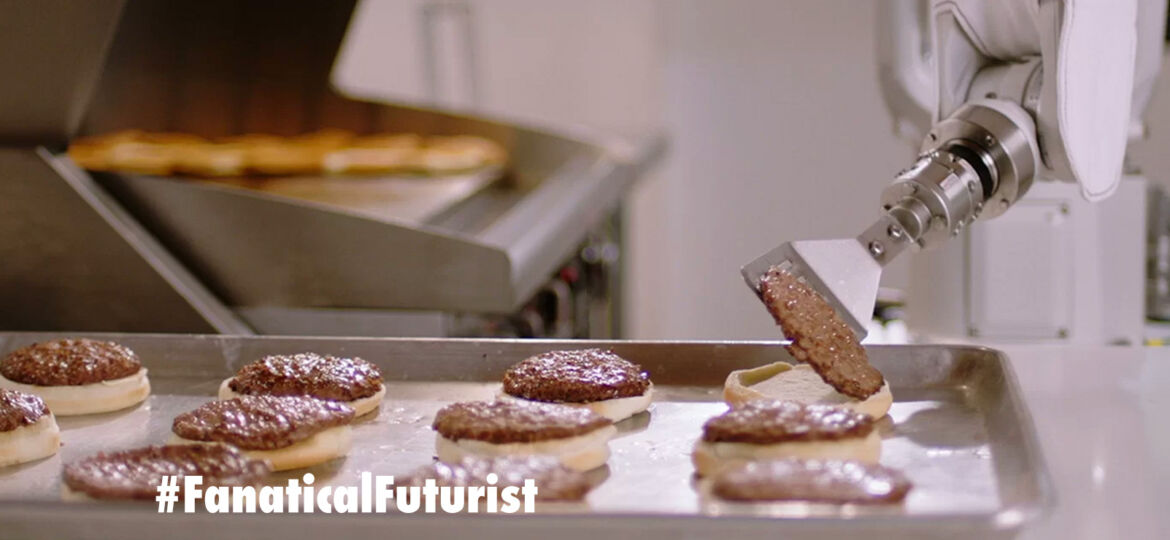
WHY THIS MATTERS IN BRIEF
As the world continues to embrace automation one of the biggest problems could be figuring out the best way for robots and humans to work together.
After debuting to much fanfare last year Flippy the burger flipping robot, made by Miso Robotics, who was going to replace burger flipping fry cooks everywhere, starting with the ones at CaliBurger in California in the US, has been fired, or to put it in marketing speak “sidelined,” at least temporarily. It turns out though that Flippy wasn’t fired for bad behaviour though, quite the contrary, it was the victim of its own success – it was too fast for its human co-workers.
When reporters visited the Pasadena location the other week Flippy, which is basically just a robotic arm with some smarts, was still on display but someone had pulled the plug, and Anthony Lomelino, the Chief Technology Officer for CaliBurger explained that they needed more time to train the human workers to keep pace.
Flippy in action, before being fired
“Mostly it’s the timing,” he said, “when you’re in the back, working with people, you talk to each other. With Flippy, you kind of need to work around its schedule. Choreographing the movements of what you do, when and how you do it.”
That means preparing the burgers before and after Flippy does his thing, such as seasoning the patties, adding condiments, and serving them to customers.
The six-axis robot arm is bolted to the kitchen floor and receives orders via digital ticket and Flippy is equipped with thermal and regular vision to monitor each patty as it cooks with cooking times being displayed on a screen that tell its human co-workers when to add cheese or prepare the buns, and it was that timing that was the issue.
The robots, which run about $60,000, were designed for the CaliBurger chain and are exclusive for the next six months, and when Flippy gets back to work the company hopes to finally realise its original goal of having them installed in all 50 of its restaurants by the end of 2018, including at its restaurants in Seattle and Annapolis.
Robots have been popping up in more and more food and beverage industry positions. Sally the robot, for example, can make you a salad, and the Café X robot barista whips up a killer latte, and then of course there are the famous Cocktail robots of Las Vegas. The robot revolution, it seems, is arriving… again, slowly, very slowly…
There’s no doubt that automation is taking jobs away from humans, but as far as fast food chains are concerned it’s difficult to get trained employees to stick around, especially when they’re being paid minimum wage to do what many would consider thankless, repetitive work.
“We train them, they work on the grill, they realise it’s not fun … and so they leave and drive Ubers,” said CEO John Miller.
According to the Washington Post, up to 50 percent of fast food restaurant staff leave within a year with the prevailing cause being low wages, but despite this staggering fact it’s still estimated that the industry spends a whopping $3.4 billion a year on recruiting and training so robots like Flippy, once it gets its job back, will likely continue to play an increasingly important role in the kitchen, and as long as there are benefits, and savings to be made, it’s unlikely anyone will be able to slow the revolution down – once it gets going in earnest that is…
















